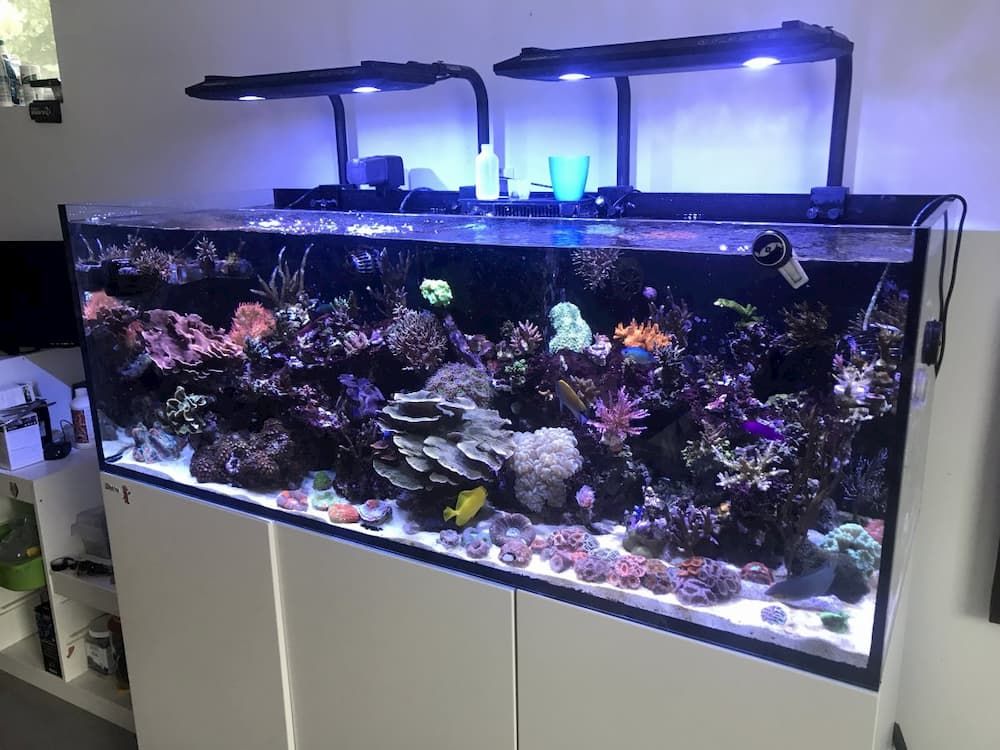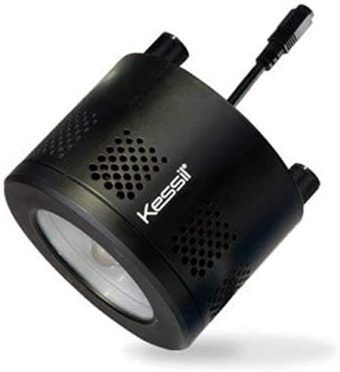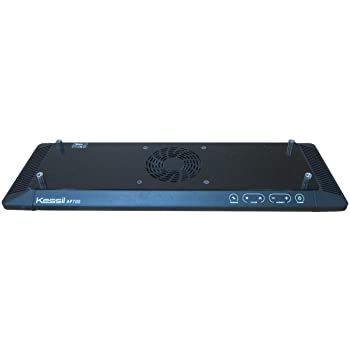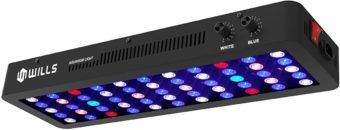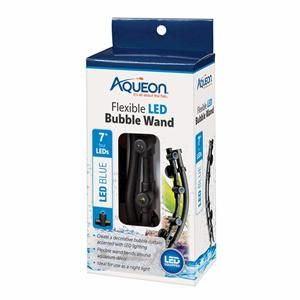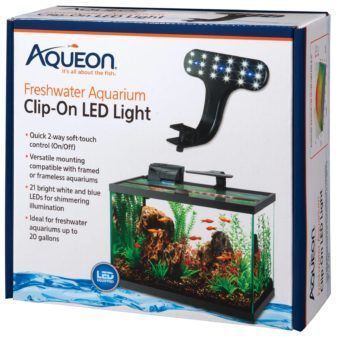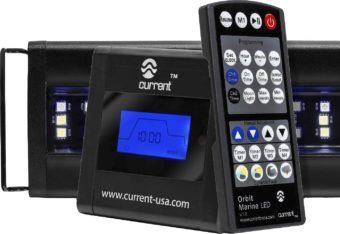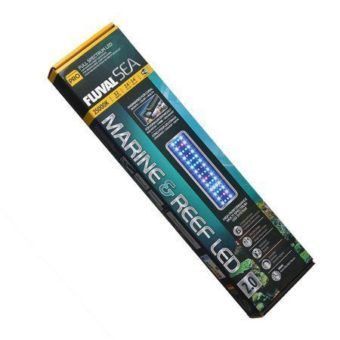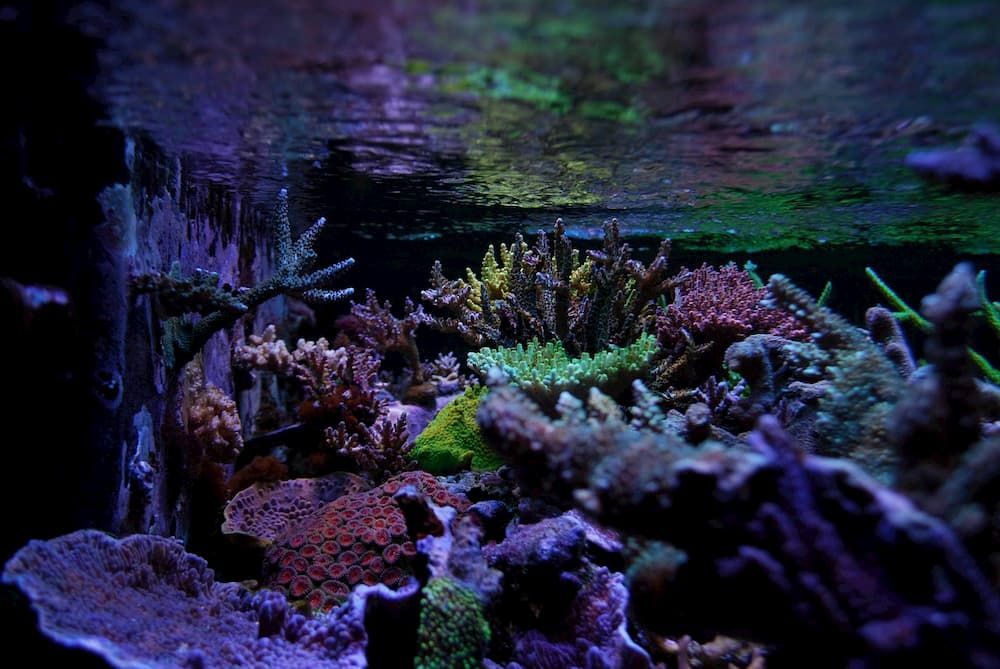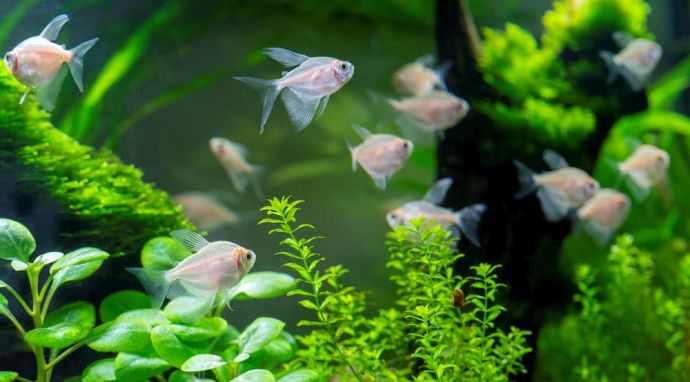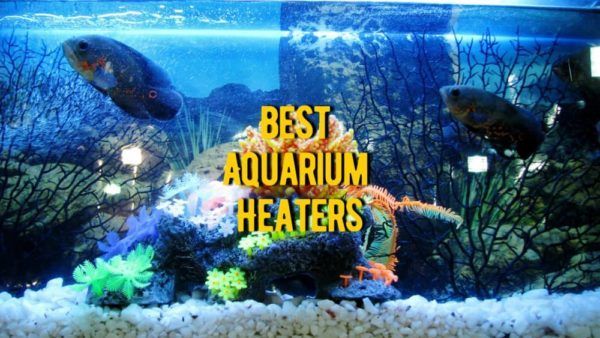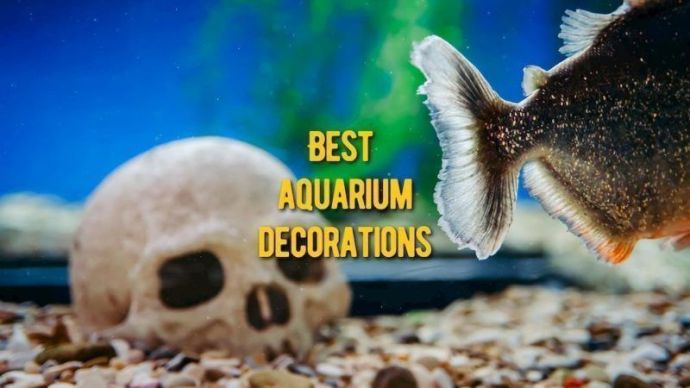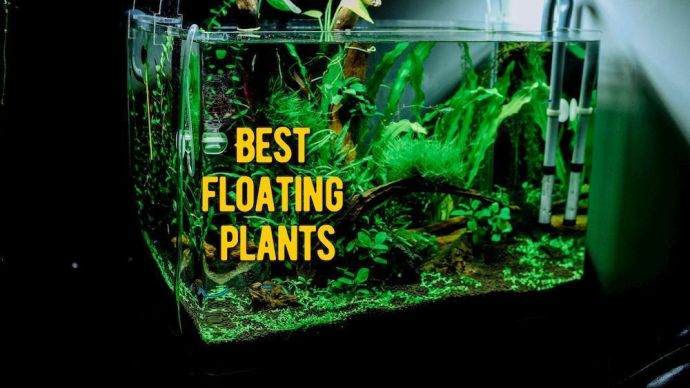The Best LED Light for a Reef Tank
Written by:
Author: Vicki Smirnova
Vicki Smirnova is a professional writer and editor who adores animals and helps readers get along well with their pets. She has been working in digital media for more than 5 years and has great experience writing content about lifestyle, including pets. Vicki specializes in dog health and nutrition, cat feeding, dog training. She is an aquarium lover and is passionate to write about fish care at home. Also, Vicki headed several websites and worked as a news editor.
View all 245 articlesLearn about our editorial process and veterinary review board.
Viewed: 3153
Updated on: 05/18/2022
One of the essential points when decorating a reef aquarium is choosing the best marine LED lighting. Proper light is vital for fish and aquatic vegetation. Today, standard incandescent lamps are rarely used because they have a considerable disadvantage — they give off a lot of heat but little light. More efficient fluorescent and LED bulbs replaced these lights.
In a fish aquarium, lighting serves primarily aesthetic purposes. But in a coral aquarium, the situation is different. Here light plays a vital role in the physiology of corals, and more precisely, in the physiology of plants living in corals — symbiotic algae. With the help of light, these single-celled algae start the process of photosynthesis.
This means that they absorb light energy and convert it into chemical energy. Photosynthesis is characteristic of almost all ecosystems on our planet. However, the ordinary concept of light — that is, visible radiation perceived by the human eye — is very far from scientific. Since Newton’s time, we have known that light consists of various color components: purple, blue, green, yellow, and red.
Each of these components has its frequency range or wavelength, and they result in a familiar white or daylight.
If corals lived above water, they would receive light consisting of these spectral components. But because corals inhabit the sea, some parts of the spectrum of sunlight filtered by water do not reach the corals — the more profound, the stronger the effect of light filtering.
Corals need the highest requirements parameters. At first, they must be placed in a shaded area in the aquarium, giving them some time to acclimatize. After this period, they can be transferred to a permanent place of residence.
You need to select the best LEDs for a reef tank, taking into account the volume of the aquarium, requirements, and plant species. Often in aquariums, you can see fluorescent lamps that create special decorative lighting. The main requirements for lamps are minimal water heating, low power consumption, and natural lighting that simulates daylight. [1]
Properly selected, the one for corals helps create comfortable living conditions for the inhabitants of the tank and increases its decorative value.
If you decide to use it in your reef aquarium, you need to choose the best one for the saltwater aquarium and its location. This is because there are many similar products available today, and it is easy to get confused when making a decision. [2]
Certain features make their quality exceptional. These qualities can be better performance, excellent design, or a variety of other features.
Our the Best 3 Picks of LED Lighting for Reef Tank
To help you make your purchase decision, here is a chart for you:
Product | Features | Links |
Our #1 Rated | 1. Kessil A360WE Controllable LED Aquarium Light
| |
Our #2 Rated | 2. VIPARSPECTRA Timer Control 165W
| |
Our #3 Rated | 3. Kessil AP700 LED Aquarium Light
|
TOP LED Reef Lights Reviews
1. Kessil A360WE Controllable LED Aquarium Light
This type is impressive in its quality, compared to other kinds of LED lamps on the market. It can be used for a vegetable tank or a conventional one. The light consists of LEDs that provide uniform color throughout the tank, combining different wavelengths. This eliminates the “spotlight effect” that you see with some LED devices and instead creates a natural glow that looks more like the ocean.
The Kessil wide-angle, darkened aquarium controller is designed for use with freshwater tanks and terrariums. However, its bright white light can be used in any tank, especially in shallow water.
Pros
Cons
- Easy to use.
- Excellent quality.
- Compatible with popular external controllers.
- None.
2. VIPARSPECTRA Timer Control 165W
This lamp has a built-in timer that allows you to control and change the lighting. You can also turn off the light after a specific time. Easy-to-understand instructions will quickly help you understand the management. The improvement of this lamp was made thanks to the contributions of various users. Buyers shared their opinions about what they wanted in a great lamp. Thanks to this exchange of information, the manufacturer was able to come up with better light.
This product is specially designed to provide perfect lighting for all your aquatic creatures with a comprehensive light spectrum layout, built-in timer, brightness control, and advanced heat dissipation system.
Pros
Cons
- Remote control and built-in timer.
- Easy to use.
- LEDs last for 100,000 hours.
- Only available in one size.
3. Kessil AP700 LED Aquarium Light
Kessil AP700 is equipped with LEDs that shine in full-spectrum and which you can connect and manage using its iPad app. In addition, the built-in controller allows you to simulate various weather conditions.
The model is perfect for all photosynthetic corals. This means that your corals and other aquarium plants will be exposed to sufficient light. This will encourage the healthy development of corals and other aquarium inhabitants. In addition, using this light will produce the best plant growth in the shortest time possible.
This model is easily attached to the aquarium; it is equipped with a unique mount, which is essential for keeping the device in place after installation.
Pros
Cons
- Automatically optimizes the LED lights.
- Built-in Wi-Fi — you can control everything from the iPad.
- Easy to program.
- Expensive.
4. WILLS LED Full Spectrum Aquarium Light
This LED can simulate natural light, as well as imitate sunrise and sunset. Thanks to its comprehensive functionality, it is prevalent among aquarists. In addition, an efficient cooling system makes the operation of this lamp quiet.
In addition, the lighting system is designed to simulate natural light. In this way, fish and corals achieve a balance to grow and be healthy. There is also a built-in timer and several light modes — red, blue, purple, white, green, and bluish-purple.
The full spectrum promotes the photosynthesis of aquatic plants, providing enough oxygen for aquarium creatures to keep the inhabitants of your aquarium healthy. For example, red light can stimulate healthy fish growth; blue light can increase the amount of vitamin D3, which will help corals absorb calcium and improve coral growth; purple light can disinfect the aquarium.
Key Features:
- Professional lamp with a full spectrum of illumination.
- The lens shines at a 90-degree angle for better light penetration.
- Can be connected in series with another lamp.
Pros
Cons
- Full-spectrum LED that has red, blue, green, purple, and white.
- Daisy chain function.
- Adjustable blue and white channels can be dimmed independently.
- Only one mounting option.
5. Aqueon Flexible LED Aquarium Bubble Wand
Create fantastic lighting in your aquarium with this flexible light fixture connected to a compressor. Enjoy beautiful lighting and aeration of aquarium water!
Due to the flickering function, you can achieve the effect of rain in the aquarium.
The owner can combine several of these lights to enhance aeration and create a more spectacular aquarium style. In addition, this lamp can be submerged in water in a vertical or horizontal position.
Key Features:
- Beautiful and unique design for your aquarium.
- Diffused and soft light.
- Design flexibility.
Pros
Cons
- Inexpensive.
- Easy to install and use.
- Doesn’t have a variety of single-colored LEDs for custom lighting.
6. Aqueon Planted Aquarium Clip-On LED Light
Maintain the lighting level for growing lush plants with this model. It is easy to mount on any aquarium with a simple clip. Also, it is equipped with 60 bright LEDs, ideal for aquariums with plants. This model can also be used as additional lighting for the aquarium.
Key Features:
- Three modes with 60 LEDs.
- Suitable for aquariums up to 20 gallons (75.71 l).
- Designed for additional lighting.
- Easy to install with a universal mount.
- Touch control.
Pros
Cons
- Easy to mount.
- Features a three-way, soft-touch control with 60 bright LEDs.
- Perfect for aquariums up to 20 gallons (75.71 l).
- Only one mounting option.
7. Current USA Orbit Marine Aquarium LED Light
Choose a new approach to aquarium lighting with this product. The system was developed using the latest IC LEDs, which have a full-spectrum and full-color reproduction. In addition, it has a light and thin aluminum construction, which makes it easy to install.
This model includes the module for full simulation of environmental lighting: Sunrise and sunset, lightning strikes, and cloudy weather. The lamp is also equipped with a Bluetooth module, so you can use a smartphone or tablet computer to synchronize with the USA eFlux Accessory compressor. Blue, daytime white, and RGB LEDs cover the entire spectrum.
Key Features:
- Ultra-thin aluminum construction is easy to install and looks neat without bulging parts, on any aquarium.
- Includes remote control and has a programmable simulation of natural weather conditions.
- Best color spectrum and maximum illumination, thanks to the new IC LEDs.
- Lenses provide natural light in the aquarium.
- Adjustable mounts included.
Pros
Cons
- Easy to program.
- Fully controllable.
- Adjustable mounts.
- Start to flicker after a while.
8. Fluval Marine & Reef 2.0 LED Strip Light
This model has a good 32-46-59 watt LED backlight. Compared to version 1.0, it has greater power. There is a brightness control for the lighting. Covers the full spectrum of natural light in the range of 400-460 nm. A touch switch with a dimming function is located on the case.
Key Features:
- Full range of natural lighting.
- Improved light intensity compared to its previous generation.
- Brightness control for the lighting.
Pros
Cons
- Full-spectrum marine and reef LED lighting.
- Illuminated, touch-sensitive switch with dimming feature.
- Promotes and supports strong coral growth and color.
- Touch switch.
- Limited control ability.
9. Aqueon LED Deluxe Full Hood
Aqueon Deluxe LED Full Hoods are designed to be mounted on the edge of the aquarium for more efficient lighting, as well as reducing the evaporation of aquarium water. The housing has a door for feeding. This kit includes a replaceable white LED daytime running light. On the case, there is a triple switch to turn on, off or to turn on the night lighting model.
Key Features:
- There is a socket for installing an additional lamp.
- Replacement lamps are easy and fast to change.
- Night lighting and triple switch.
- Fits snugly to the side of the aquarium.
- Small door for feeding.
Pros
Cons
- Designed to fit inside aquarium rim tightly.
- Lamp: Day White, Colormax, Beauty Max, or Max Blue.
- Moonglow accent light and three-way power switch included.
- Limited control ability.
10. GloFish Blue LED Aquarium Bubbler
This product has six blue LED lights that emit bubbles, creating beautiful underwater effects. The aquarium water aeration function helps improve the circulation and oxygen saturation of the water (air pump, air tube and check valve are sold separately). The lamp can be used with aquariums of any type and will create a beautiful effect in your aquarium that you and your friends will enjoy watching it.
This lamp is the perfect way to transform any aquarium into a stunning underwater world quickly. Luminous fish will shine beautifully in the light of this lamp.
Key Features:
- Oxygenates: The aeration function improves the circulation and oxygen saturation of aquarium water (air pump, tubes and check valve are sold separately).
- Use: Suitable for any aquarium — the perfect way to turn any aquarium into a stunning home underwater world.
- Underwater lamp with six blue LED lights enlivens the fish tank.
- Primary colors: contains six blue LEDs that enhance the bright colors of fluorescent fish, plants and decorations.
Pros
Cons
- Contains six blue LEDs that enhance the brilliant colors of fluorescent fish, plants, and ornaments.
- Fluorescent fish and products create a complete underwater fluorescent experience.
- The bubbling feature improves the circulation and oxygenation of aquarium water.
- Not as powerful as other products.
🐠 Buyer’s Guide
Important Benefits
LED (Light Emitting Diode) is an excellent option for a marine aquarium. This type of lamp does not use much electricity. They are characterized by long and relatively easy operation. These features allow you to reduce operating costs for a long time. In addition, eco-friendly LEDs do not contain harmful chemicals, such as mercury or phosphorus, unlike fluorescent lamps.
There are several other advantages:
1. Generate less heat
The amount of heat generated from LED lamps is very little, so the temperature level of the aquarium will not change much. Thanks to the low heating, you can minimize the power consumption of your aquarium lighting system. In addition, since LEDs emit less heat, they do not always require fans and systems.
2. Security
LED lamps are safer than metal-halogen and T5 fluorescent lamps because they do not contain any metal filaments or poisonous gases. Manufacturers are also improving the design of lights, making them leak-proof and water-resistant.
3. Stimulate the growth of plants and marine animals
You will be surprised how much the lighting you use will affect the environment in the aquarium. LEDs can be handy for the health of the inhabitants of your reef aquarium. Most LED lamps produce light with a color temperature of 8000K and 10000K, which should be sufficient to stimulate a wide range of plants and other organisms in the aquarium.
4. LED lamps are compact
Most LED lighting systems are designed to be compact and easy to set up. You can place these lamps almost anywhere so that they do not interfere with the maintenance of order. Some manufacturers also make waterproof lights that can be safely submerged in water.
READ MORE: How to make Refugium for Saltwater Aquarium
Reef LED Lighting: What You Need To Consider
To bring the lighting in the reef aquarium as close as possible to natural, various types of lamps emit light in different ranges.
As you know, light waves of different spectrums penetrate the water column to different depths. Organisms that live at great depths prefer lighting with a blue spectral component. In this case, it is necessary to use lamps with a blue radiation spectrum for lighting the aquarium and use lamps of the “full” range. Combining these lamps will allow you to show all the underwater inhabitants in the most attractive way. In reef aquariums, the ratio of blue and full-spectrum lights is 1 to 1.
It is not easy to find the best-LED lamp. Therefore, you must choose a suitable model for your inhabitants and vegetation.
The following tips will help you determine which LED light you need: [4]
Inhabitants and plants
The choice of LEDs should depend on the type of marine life in your reef aquarium. First, you must analyze the needs of your plants and creatures to understand their need for light. For example, for plants that are in the growth phase, abundant lighting is essential. The intensity also influences fish, crustaceans, corals, and other inhabitants of your aquarium.
Size
The aquarium size is an essential factor that you must consider before buying the best LED lighting. Some models can adjust the amount of light for their own amount of water.
Quality
The quality of LED lights is often reflected in their cost. You need to find a model that has the best quality in terms of build and performance. Check the material of the lamp, its integrity, and the quality of the lens. The same applies to waterproof characteristics. Since it will work in wet conditions, it must also be water-resistant.
Lifespan
Manufacturers always specify the expected lifespan of LED lamps. Therefore, you can compare different models to find the one with the best life span.
Ease of use
Some models of lamps are programmable and equipped with remote control. Thanks to this, you can easily control the lighting of your aquarium, even sitting on the sofa. [3]
Color temperature
The color temperatures of the LEDs also affect the water temperature in the reef aquarium. This is because the water will absorb the light that will lead to an increase in moisture. Learn the color temperature requirements for marine aquarium life before making a purchase.
Light effect
Some LEDs can recreate the effect of sunrise and sunset. In addition, you need a model that can distribute light evenly. So, learn all the modes before you buy a lamp.
READ MORE: Aquarium Temperatures
FAQs
💡 How many hours of LED light does a reef tank need?
Most hobbyists run their tank lights for 10-12 hours total. Most of us have a dusk/dawn schedule where we run only the blue or acting lights for a couple of hours before and after our daylight bulbs are used.
⏳ How long do LED reef lights last?
Not all lights are rated to last that long, but even if your LEDs last for 10,000 hours, it is still roughly three years without changing any bulbs. LEDs should last you for a very, very long time.
❓ Can you grow corals with LED Lighting?
Yes, you can grow corals using this type of lighting. Many aquaculture producers and suppliers currently use LED systems for growing corals due to saving money by reducing energy costs. The specific spectrum provided by LED lighting can bring out colors in certain fish as you’ve never seen before.
The size of lamps, their power, and the radiated spectrum have a significant impact on the overall life of the reef aquarium. Even though everything may seem very complicated and confusing in the first approximation, do not be afraid — study all the options that are acceptable to you and you will definitely succeed.
READ MORE: How to know when tank is ready for anemone
Article Sources:
- “8 Great Ways to Grow Colorful Corals.” Nano-Reef Community, 1 May 2020, nano-reef.com/forums/topic/412638-8-great-ways-to-grow-colorful-corals/.
- “Aquarium.” Encyclopedia Britannica, britannica.com/science/aquarium.
- Brand, Robert. “4 Things You Need to Know About Aquarium Care – Aquarium Tidings.” Aquarium Tidings, 13 Mar. 2018, aquariumtidings.com/4-things-you-need-to-know-about-aquarium-care/.
- Peterson, Tarla. “The Art of Aquarium Keeping Communicates Science and Conservation.” Frontiers, 11 Jan. 2018, frontiersin.org/articles/10.3389/fcomm.2018.00017/full.
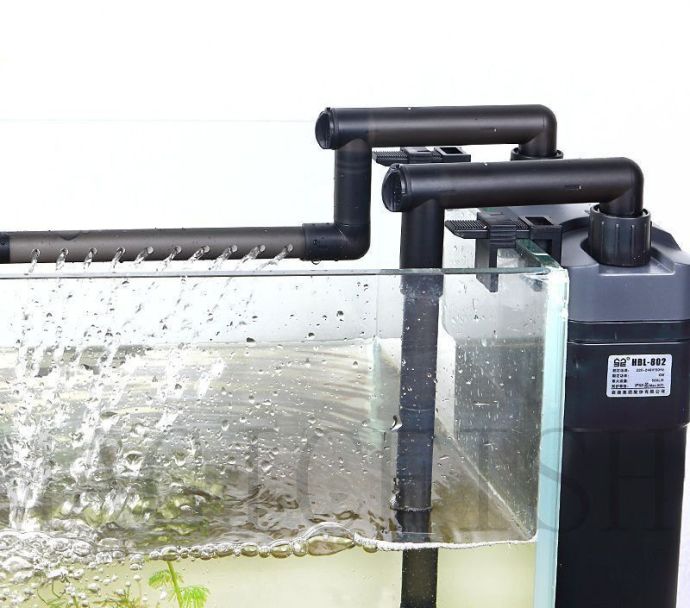 Fish and Aquarium Reviews The 9 Best Aquarium Canister Filters: Best Canister Filter Reviews (Updated List)
Fish and Aquarium Reviews The 9 Best Aquarium Canister Filters: Best Canister Filter Reviews (Updated List) - 1459
- 5
 Fish and Aquarium Reviews The Best UV Sterilizers for Freshwater and Saltwater Aquarium
Fish and Aquarium Reviews The Best UV Sterilizers for Freshwater and Saltwater Aquarium - 259
- 0
 Dog Products & Toys Reviews The 10 Best Brush for Australian Shepherd: Review and Buying Guide
Dog Products & Toys Reviews The 10 Best Brush for Australian Shepherd: Review and Buying Guide - 13077
- 0









